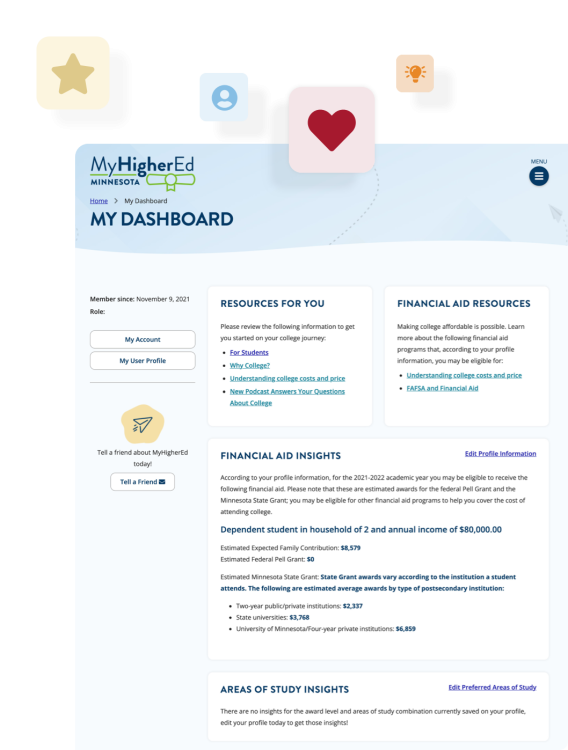Where a student chooses to attend college is an important decision that will impact the rest of his or her life. As a school counselor, one of your many responsibilities is to support and assist students figure out and factor in the features of a school that are most important to them.
A Minnesotan Education
Minnesota has nearly 200 colleges and universities that vary in size, student support services, and extracurriculars. There are many considerations your students need to keep in mind when searching for a college that meets their needs.
While there is no magic formula for choosing a college, one of the best ways to help students narrow down their list is to start by asking them some questions. Among those is whether a student’s academic performance and career goals are pointing them more toward a two-year college or a four-year university. You may also want to help them determine if they prefer to attend a public or private institution, and consider other factors such as:
Geographic Location
Location, location, location. It’s often associated with buying and selling real estate, but it is just as important when choosing a college.
Minnesota residents can benefit from in-state tuition or the state’s tuition reciprocity program with neighboring states. Some students choose to attend college near their hometown, allowing them to save money by living at home, as well as cut costs on travel, since car rides are usually less expensive than airfare.
You may want to ask your students to consider whether they prefer living in a rural area, city, or some place in between. Small college towns typically have an intimate sense of community, whereas schools in large cities can offer more access to internships with large companies and nonprofits.
School Size
Minnesota colleges and universities come in all sizes, from small liberal arts colleges with fewer than 1,000 students to large universities that annually enroll more than 30,000 students.
Large universities can offer a wide variety of majors and courses, housing options and activities. Additionally, large schools typically maintain well-stocked libraries, state-of-the-art research facilities, and nationally recognized sports teams. Notably, introductory classes can be large, which some students find exciting while others find overwhelming.
On the other hand, small schools may not offer as many programs as large universities, but they often provide specialized degrees and lots of hands-on learning opportunities. Small colleges can also mean smaller class sizes, allowing students to easily access individualized support from faculty and staff.
College Search Tool
Search and compare Minnesota institutions by cost, location, financial aid, student success, and program offerings.
Overall Cost
Costs vary from school to school, and there are five main categories of expenses students will need to keep in mind: tuition and fees, room and board, books and supplies, personal expenses, and transportation.
Recommend that students look beyond published tuition prices, since what is listed may not be the actual amount they pay after financial aid and institutional grants. Encourage them to consider colleges that not only offer affordable tuition but also substantial financial aid packages, which may include grants, scholarships, loans and work-study opportunities.
Choosing A college
This publication features a program grid to help your students explore and compare what Minnesota postsecondary institutions have to offer.
Online Programs
More and more institutions are offering programs using the Internet. Online opportunities may provide students with the option of learning in flexible, convenient and personalized formats. The quality of online education can be excellent, providing students with experiences, exercises and assessments that rival the traditional classroom.
However, it’s important for them to be aware that the Internet also offers new ways for educational scams and diploma mills to reach out to people who are looking for genuine education. It is not always easy to identify phony operations from a casual look.
Other Considerations
Finally, choosing college that is a right fit involves many considerations. For many academic quality, location, cost and size are all significant factors. However, there are also other factors students should be aware of and consider, including:
- Campus environment and activities
- Available health and mental health services
- Accommodations for special needs
- Diversity of student population
- Faculty experience and expertise
- Length of time and location of classes
- Graduation statistics for that institution
- Academic reputation and credibility
- Tutoring and academic support services
- Transportation availability and cost
- Campus safety





